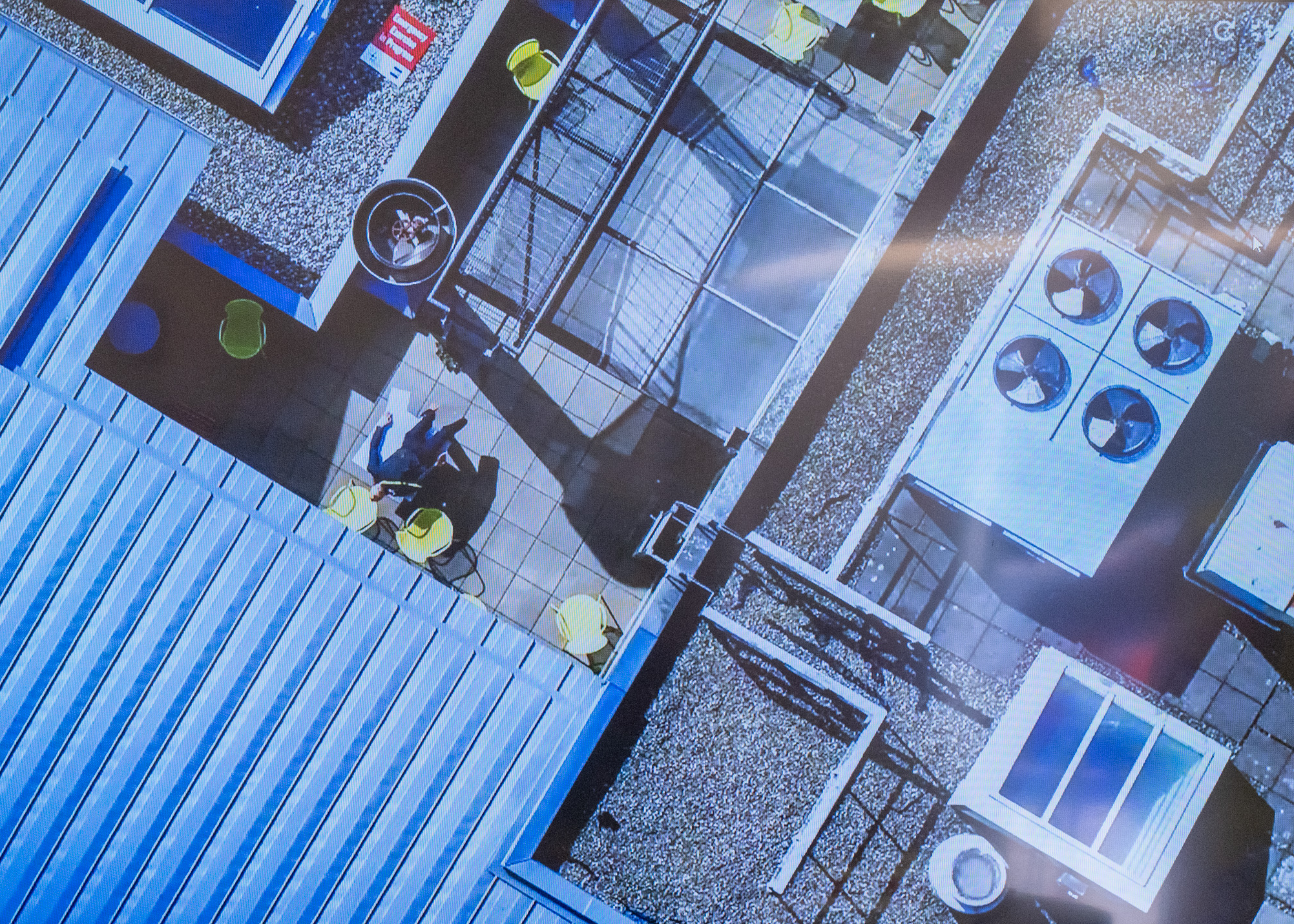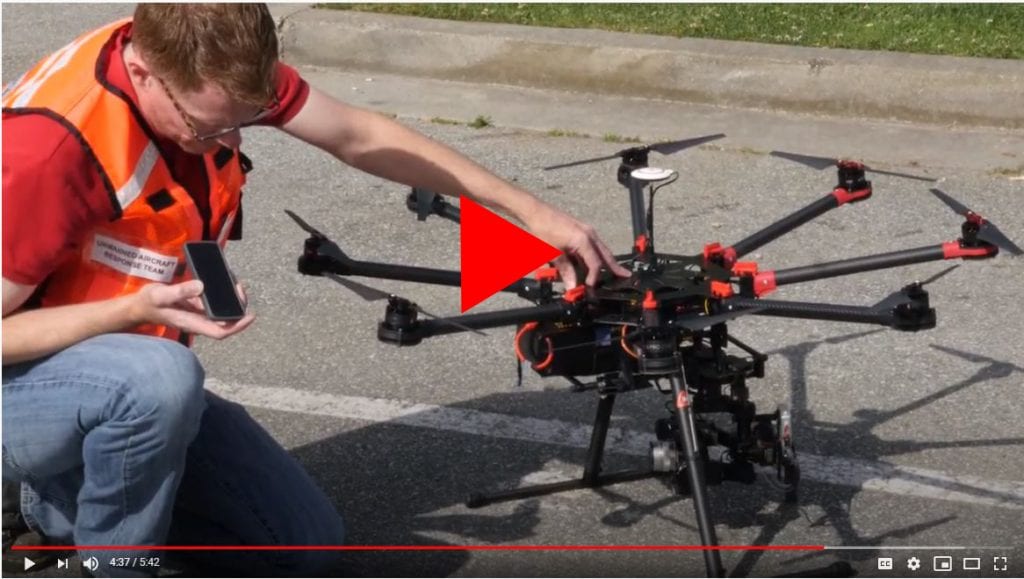BCIT holds a Disaster Day training exercise every second year in early June. This exercise coordinates the efforts of campus emergency response teams with external first responders, including the RCMP, fire department, and emergency health services.

RPAS Hub pilots add a valuable component to this training event by flying drones over campus buildings and sending a visual feed to the Emergency Operations Centre for inspection. Through real-time, high-resolution aerial video, RPAS can quickly convey details on the extent of an emergency to people directing the response, helping them to determine the best course of action.
Using additional payloads such as FLIR thermal imaging and multispectral cameras, an RPAS can also detect problems such as fire hotspots or gas leaks.
The team also practices using RPAS to airlift first-aid and other supplies to hard-to-reach areas.
Video: Incorporating RPAS into First-Response
